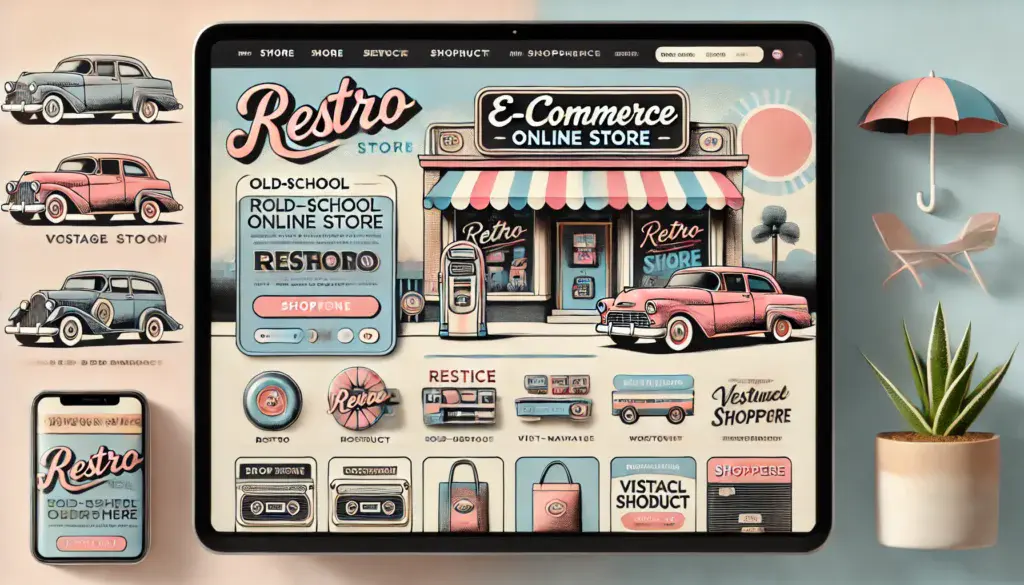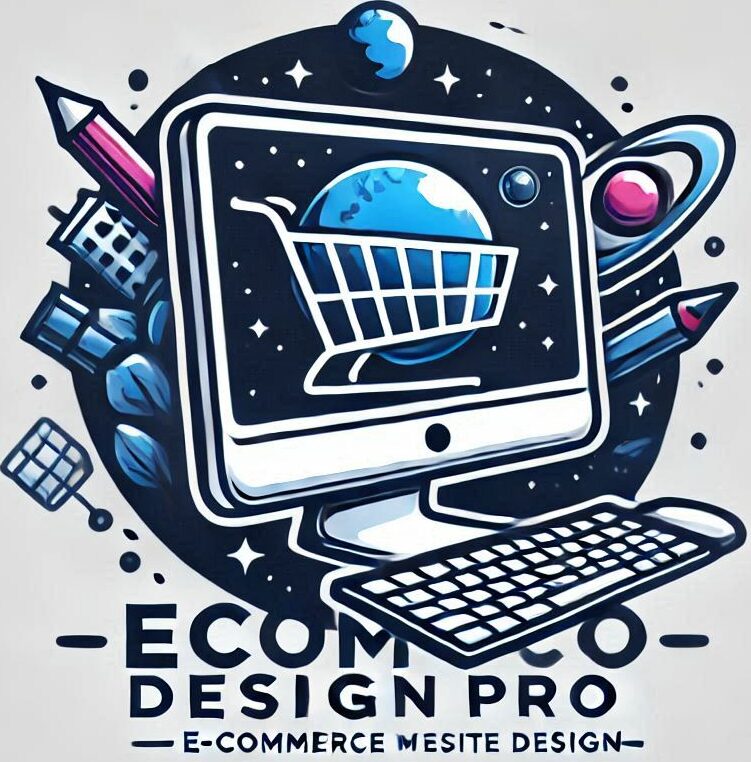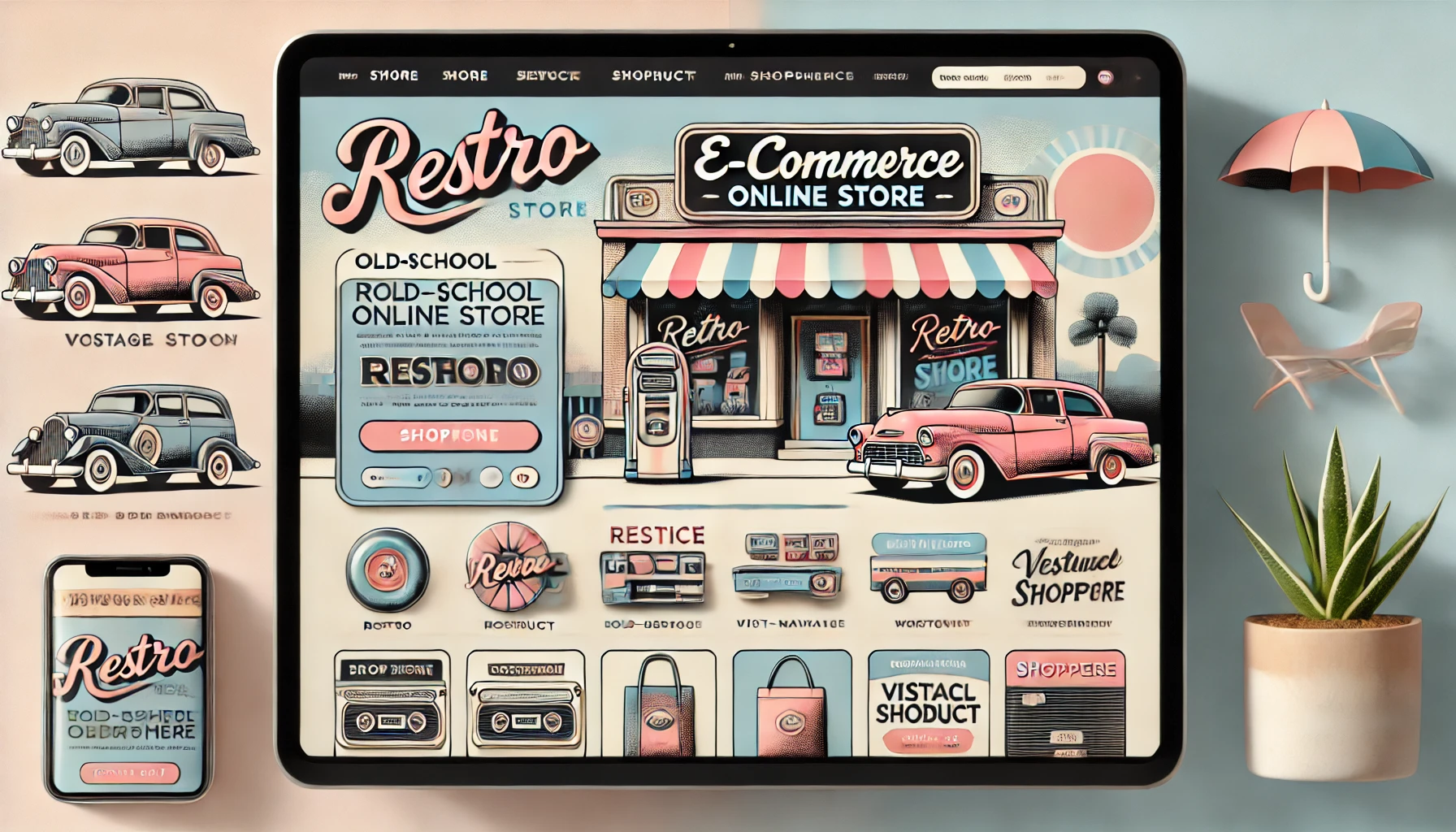
Retro design is making a splash once again, and it’s showing up all over our digital world, especially in e-commerce. Think pastel colors, funky fonts, and those charming old-school graphics that remind us of simpler times. It’s like a flashback to an era before smartphones took over our lives.
But why are we all loving the familiar feels of the past in the present day? Well, it turns out nostalgia is a pretty powerful force. It connects us with emotions and memories linked to different points in our lives. Brands are embracing this by tapping into retro aesthetics to create experiences that feel both fresh and comfortingly familiar.
Culture has a big hand in shaping what we see online. This cultural yearning for all things old-school is about more than just looks. It’s about capturing an essence of authenticity and storytelling that modern minimalism sometimes misses.
So, what’s driving brands to reintroduce these classic design elements into their e-commerce designs? One reason is that customers are drawn to the personality and character these designs offer. When done right, a retro vibe can set brands apart from their competitors, giving them a unique identity that sticks in people’s minds.
Factors Driving the Retro Design Trend in E-commerce
Let’s talk about why retro design is really taking off in the world of e-commerce. In a sea of digital sameness, people are looking for something different that brings a sense of joy and comfort. Retro aesthetics deliver exactly that with a sense of uniqueness and authenticity that’s a breath of fresh air.
Think about how everyone’s a bit tired of ultra-modern, sleek design—they want something that feels personal and has a story. Retro designs step in with their distinct aesthetics and narratives, setting themselves apart from the often sterile contemporary looks.
There are other big influences at play too. Social and economic shifts contribute to this trend. It’s like when times are tough, people often find solace in the warm memories of the past. This longing isn’t just personal; it’s cultural, a kind of shared yearning for what once was.
Even tech advancements give retro designs a boost. New technologies help recreate classic patterns or print styles while ensuring that usability and speed are never compromised. Plus, the efficient integration of these designs into responsive and mobile-friendly interfaces means retro doesn’t have to mean outdated.
For e-commerce platforms, tapping into nostalgia can offer a real edge. It’s about standing out in a crowded digital marketplace, where grabbing attention is half the battle won. Nostalgia can forge a strong emotional connection between a brand and its customers, transforming buyers into loyal fans.
How to Integrate Retro Design in E-commerce Successfully
Bringing retro designs into your e-commerce site sounds fun, right? But it’s not all about throwing neon fonts and Polaroid-style photos around. The trick is merging those timeless styles with today’s functionality, turning nostalgia into an asset instead of a distraction.
Finding that sweet spot between charming and useful means thinking critically about user experience while adding those retro touches. Focus on navigation and interactive elements, ensuring even the snazziest design doesn’t compromise how easy your site is to use.
When choosing patterns and palettes, keep your brand message in mind. Each element should enhance your story, not just fit a trend. Go for colors and shapes that resonate with the period you aim to reflect, while also meshing with your overall brand identity.
And, take cues from successful sites that nailed the retro vibe. Look at how they incorporate vintage elements while keeping their pages engaging and efficient. Lessons from accomplished brands will guide you — but remember to add your unique twist.
Jumping on the retro bandwagon also means being aware of common pitfalls. One big mistake is overdoing it, leading to a design that feels kitschy or outdated. Balance is crucial, so mix retro elements with modern aesthetics to dodge looking like a page from yesteryear that never moved forward.
The Future of Retro Design in E-commerce
Retro design isn’t just some passing fad. It’s gearing up to evolve and stay relevant in the e-commerce world for a long time. But what’s next for this beloved trend as we move forward in our digital journey?
Brace yourself for a future where AI and machine learning refine retro aesthetics, bringing new levels of customization and personalization to e-commerce sites. Imagine algorithms that can tweak design elements based on customer preferences, making personalized shopping experiences more immersive and tailor-made for each visitor.
And consumer behavior, as always, will be a wild card that shapes design evolution. As future shoppers demand even more authenticity and personalized interactions, retro might take on new forms, combining old-school charm with futuristic innovations.
The big question: Can these designs keep up with rapid tech advancements? Absolutely! Retro design isn’t static; it evolves by incorporating digital trends and advancements while maintaining its nostalgic roots.
For e-commerce businesses, the ability to weave retro aesthetics into a constantly changing tech landscape will be key. Staying current means being ready to adapt and innovate, using technology to breathe fresh life into these timeless designs.
Retro’s charm is all about remembering the past while staying grounded in the present. As long as we continue to crave that connection in our fast-paced world, retro design will have a special place in e-commerce’s future.




The resurgence of retro design in e-commerce is a fascinating blend of nostalgia and innovation. As brands embrace vintage aesthetics—bold fonts, pastel hues, and classic graphics—they create emotional connections with consumers seeking familiarity in an ever-evolving digital landscape. This trend isn’t just about aesthetics; it’s about storytelling, authenticity, and differentiation in a competitive marketplace.
What’s intriguing is how modern technology enhances retro design, ensuring seamless functionality while evoking the charm of bygone eras. The challenge lies in striking the right balance—using vintage elements without compromising user experience or appearing outdated.
As AI and personalization shape the future of online shopping, retro design will likely evolve alongside, merging past influences with future innovations. The key for brands is to harness nostalgia while staying adaptable, proving that old-school charm and cutting-edge tech can coexist beautifully in e-commerce.
Hey Andrejs,
You’ve captured the essence of this trend perfectly! Retro design in e-commerce is so much more than a style choice—it’s storytelling that taps into emotion and authenticity, which is exactly what today’s consumers are craving. I love your point about balancing nostalgia with modern functionality; when done right, it creates such a memorable user experience.
And yes, AI and personalization are set to add a whole new layer to this revival. Exciting times ahead! Thanks for sharing your insights—always appreciate your thoughtful perspective.
Best,
Thierry
Thierry,
The retro look and feel are most often associated with people who are past the age of 60. This in no way diminishes the effect of people looking for something different or creative. Every brand needs to be refreshed periodically to stay current with the expectations of the public. Many times brands jump onto changes without doing proper research. They may do a sampling of 500 or 1000 people from a small control group without trying a larger sample group for a more sustainable outcome.
Jerry
Hi Jerry,
Thank you for sharing your perspective! You bring up an important point—while retro designs often resonate with older demographics, they also attract those seeking something unique and nostalgic, regardless of age. And I completely agree that refreshing a brand should be a well-researched process. Relying on small sample sizes can definitely lead to missteps, especially when broader audience insights are overlooked.
A thoughtful, data-driven approach helps ensure design updates truly connect. Appreciate your insights—hope to hear more from you in future discussions!
Best,
Thierry
Hello Thierry!
I love how retro designs are making a comeback in e-commerce sites! There’s something so nostalgic and unique about blending the old-school aesthetic with modern functionality. It’s exciting to see how businesses are tapping into that vintage vibe while keeping things fresh and user-friendly.
Do you think this trend will continue to grow as more younger generations discover retro designs, or will it eventually fade as trends often do? It would be interesting to see how it evolves!
Thanks for this insightful article!
Angela M 🙂
Hi Angela,
Thank you so much for your kind words! I’m right there with you—there’s something special about mixing nostalgic retro aesthetics with modern tech to create a fresh, engaging experience. It’s like the best of both worlds!
Great question! I do think this trend will continue evolving, especially as younger generations embrace vintage styles in new ways. But like all trends, it’ll probably morph into something we haven’t quite imagined yet. Exciting times ahead!
Appreciate you reading and sharing your thoughts, Angela! ????
Best,
Thierry